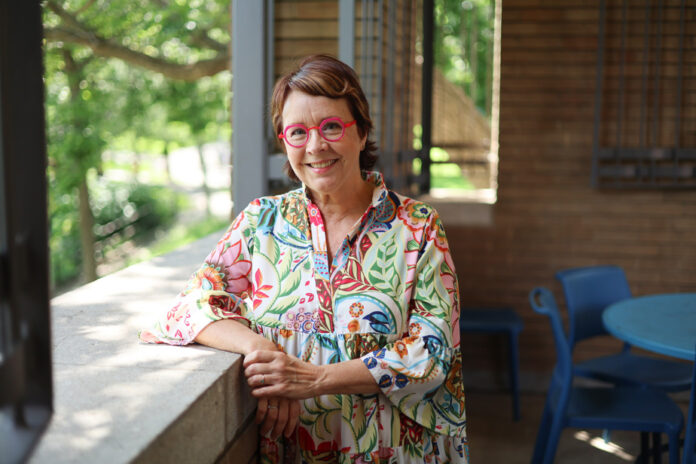In Self-Portrait of Another, a book with a deliciously free form and which only responds to its own requirements, Élise Turcotte is interested in the life and legacy of her aunt Denise Brosseau. At the origin of this intimate investigation: an obsession with this enigmatic woman whose life and memory deeply intrigue him.
“I’ve always been fascinated by her. It’s as if it was another me, a woman in whom I recognized myself, but without really knowing her,” tells us the woman who has worked in the literary world for around forty years.
And for good reason: Denise Brosseau, born in 1936 in Sorel, has followed an astonishing trajectory. She lived in Paris and Mexico, was interested in theater, mime and philosophy, married filmmaker Alejandro Jodorowsky (The Sacred Mountain, El Topo) and maintained a captivating love correspondence with Gaston Miron , among other things. After a long battle with addiction and “madness”, she tragically killed herself in Montreal in 1986.
“Initially, I didn’t want to talk about myself in this book. But it really failed! laughs Élise Turcotte. It was an eloquent phrase from the French woman of letters Nathalie Léger that led her to accept that she was also delving into herself by taking an interest in her aunt: “I had the feeling that I was in control of a huge project whose I would extract a miniature of modernity reduced to its simplest complexity: a woman tells her own story through that of another”, she writes in Supplement to the life of Barbara Loden.
This sentence of Léger quoted in Self-portrait of another is only one layer of the imposing quilt of references that the writer has embroidered around her book. The bibliography is loaded, but the result is remarkably fluid. Through the images and footnotes, the reader witnesses, at the same pace as the narrator, the transformation of the investigation and the multiplication of its senses.
Élise Turcotte is a great fan of this hybrid literary form. Both as a reader and as an author. Involving thought and reflection can only enrich a work, according to her. “I think it’s a form of generosity that I have. I want to show off my inner workshop, my imagination,” she explains.
Any writing project is an investigation, believes the author, who insists on the importance of letting coincidences do the talking. And if we don’t let the tentacles of this project rest where they want, what’s the point?
It is also a resolutely feminist project to retrace the life of a “forgotten” person in history. “I think everyone has the right to a second life,” explains Élise Turcotte. I always write against oblivion. And more and more, against the forgetting of women’s voices. »
“I was shocked that [Denise] was never named anywhere. That all the artists who had worked with her spoke so little of her! It’s not normal, it seems to me that she was important in the lives of these people, “she adds.
By taking an interest in the life of Denise, the writer wanted to make her exist through feminine eyes. In addition to the authors whose writings are quoted in the book, female characters therefore intervene throughout the story. Of particular interest to the narrator are Leonora Carrington, Remedios Varo and Kati Horna, three artists who once held secret meetings to discuss magic, witchcraft and art. Could this sorority have saved Denise?
“I wanted to surround him. To create a constellation around it and make it lively and lively. Part of me was thinking, what if she had been in those circles, what would have been different? “, she explains. It is certain that Self-Portrait of Another, even if it plunges us into the past, is a very lively novel. An emotional and intellectual gymnastics anchored in the purest of present moments.















